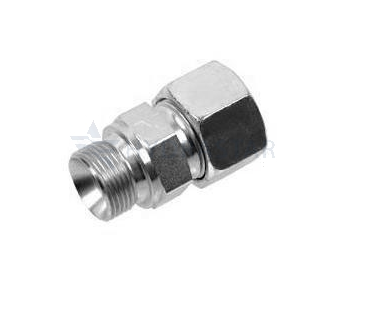Choosing the correct compression fittings for hydraulic systems is essential to ensure the quality of the seal, maintain optimum hose pressure, and reduce the possibility of torqueing. Incorrect, poorly fitted, or malfunctioning compression fittings pose a severe risk of injury. Despite their tiny size, compression fittings play a vital role in ensuring fluid transmission takes place safely, without the risk of hoses or tubes becoming detached.
With a wide variety of hydraulic compression fittings from which to choose, it’s important to have confidence that you’ve selected the correct components for your system, so consider the key points in this article before making your decision.
What Size Of Compression Fittings Do I Need?
Because it is subjected to extremes of temperature and pressure, the size of the compression fitting is critical to ensure a secure and safe fit in your hydraulic system.
To work out which size fitting you need, measure the inside diameter (ID) and outside diameter (OD) of the hose, tube or pipe to which the compression fitting will be attached, for non-threaded fittings. For a threaded fitting, measure the thread diameter at its widest point. The dimensions will typically be expressed in inches (usually as a fraction of an inch, such as 3/8), or millimetres.
By measuring the diameter of the compression fitting, you can match it to the corresponding measurement from the hose, tube, or pipe to ensure a tight fit when assembled.
Should I Choose Single Or Double Ferrule Fittings?
Understanding your system’s maximum operating pressure is essential when selecting compression fittings. A fitting that is unable to withstand high pressure could fail under load, costing you time and money while your production line is halted.
Single ferrule fittings are a popular choice, partly due to their low cost, but they have a lower pressure rating than double (or twin) ferrule components. Installation is straightforward and they are easy to use, but are best suited to operations where the pressure is unlikely to increase, so they won’t be put under sudden intense stress.
Double ferrule compression fittings, which are available in the same sizes as their single ferrule counterparts, have a robust mechanical grip and are therefore ideal for high-pressure units. These fittings are also suitable for use with tubes of different thicknesses and materials.
Which Materials Are Best For Compression Fittings?
Due to the high pressure in hydraulic systems, durable materials are essential to prevent premature failure of compression fittings. Most components are made from steel or brass.
Steel: Strong and durable, steel also has a high resistance to heat. Tolerance to corrosion is high, as it is often alloyed with other materials. Steel fittings tend to be more expensive to purchase but offer an excellent long-term option in hydraulics.
Brass: Brass is easy to machine, as well as being durable and resistant to corrosion, offering high standards of performance overall.
Design & Supply From Hydrastar
At Hydrastar, we stock a comprehensive range of branded compression fittings for every hydraulic system. If you’re unsure which fittings you require, simply get in touch, and our experts will be happy to advise you. Alternatively, why not let us design and install the entire hydraulic system for your business, saving you time and ensuring the system meets your industrial needs perfectly? Get in touch to find out more.


